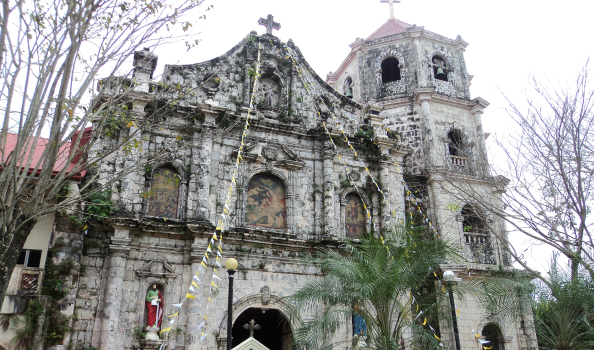
In a land area of 3,666.44 square kilometers, the diocesan territory covers the eastern part of Quezon province.
Quezon is located southeast of Metro Manila and it is surrounded by the provinces of Aurora to the north, Bulacan, Rizal, Laguna and Batangas to the west and the Camarines provinces to the east. Quezon lies on an isthmus separating the Bicol Peninsula from the main part of Luzon. The province also covers the Polillo Islands in the Philippine Sea.
As of end of year 2016 the total population of the diocese is 981,699 of which 87.20 percent are Catholics or 855,697.
Suffragan of Lipa
Created: April 9, 1984
Erected: Jan. 29, 1985
Comprises the eastern part of Quezon province
Titular: San Diego de Alcala
The Diocese of Gumaca in Quezon Province is a comparatively new diocese, created twenty six years ago on April 9, 1984. It comprises the eastern part of Quezon Province and is a suffragan of the Archdiocese of Lipa. It is the youngest of the three dioceses existing in the province of Quezon today; that of Lucena covering the southern portion, that of Infanta covering the northern portion, and that of Gumaca now covering the eastern portion. The diocese's titular patron is San Diego de Alcala.
Early in the Spanish era, about 1595, the territory of Quezon had been part of the jurisdiction of the then Diocese of Caceres in the Bicol area. Eventually it was transferred to the Diocese of Lipa when this diocese was created in 1910.
On Aug. 12, 1950 the Diocese of Lucena was created and got jurisdiction over the entire province of Quezon, until the Diocese of Infanta was created in the same year and got jurisdiction over the entire northern portion. The territory that now comprises the Diocese of Gumaca was part of the Diocese of Lucena until it was made a separate diocese.
The Franciscans are recorded as the first missionaries who brought Christianity to the territory that now comprises the province of Quezon. The Parish of Gumaca was in fact founded as early as 1726, followed by that of Mulanay in 1836, and that of Lopez in 1861.
Brief History of Gumaca
Gumaca, one of the oldest towns in Quezon Province and only several years younger than the "Noble and Ever Loyal City of Manila," was already a well-established community even before the Spaniards came.
Formerly known as Bumaka (to fight), the present town of Gumaca was a settlement founded at the southern bank of Palanas River in the 14th century by a group of settlers from Borneo and Malay Peninsula.
The earliest known ruler was Lakan Bugtali. His sovereignty extended over the regions bordering Gusuan, now called Lamon Bay, from Gamao point to the North, to the island across the bay or now known as Alabat Islands, to the southwest passing the northeastern part of the present town of Caluag, the source of Talolong, which traverses the town of Lopez, and Pandanan Rivers and on the northwest as far as the upper Kalilayan River. Thus when the first Spaniards arrived in this settlement in 1574 led by Father Diego Oropesa, they found a group of barangays with their own culture and government.
From 1574 to 1670 the town of Gumaca was ruled by Spanish Friars. Then from 1671 to 1893 the town was ruled by Spanish and Filipino Gobernadorcillos. From 1893 to 1900 the town executives came to be known as Capitan Municipal and from 1901 the head of the town was elected by the people and came to be known as Presidente Municipal. Later in 1936 this title was change to Municipal Mayors.
It must be noted that the brief history of Gumaca had no mention of any law, decree or Republic Act which created the Municipality and there was no mother municipality where Gumaca came from. As for its daughter towns, Lopez is the most notable among them, being one of the largest and the most progressive in that part of the province.
Literacy Rate in the diocesan territory is 99%.
Feast of San Isidro / Balwarte sa Gumaca
(May 15; Gumaca, Quezon). This festival is different from Pahiyas sa Lucban - balwarte or arches are decorated with various agricultural products like bananas, vegetables, buco (coconut), pineapple, and root crops. These crop decors are pulled out by the people after the patron saint has passed. The three most beautifully decorated balwartes are given prizes.
San Diego de Alcala Fortress (Kutang San Diego)
Recognized by the National Historical Commission as a national treasure in 1981, this fortress was constructed by the Spaniards under the leadership of Franciscan Father Francisco Coste. It was erected to help guard the town against sea pirates. The fortress is located in Gumaca, Quezon. There used to be an existing tunnel between said fortress and the San Diego de Alcala Church, now a cathedral.